Particle Flow in Elbow, Erosion CFD Simulation by DPM
$100.00 Student Discount
In this project, the airflow containing micro-particles inside an elbow is simulated.
Click on Add To Cart and obtain the Geometry file, Mesh file, and a Comprehensive ANSYS Fluent Training Video.To Order Your Project or benefit from a CFD consultation, contact our experts via email ([email protected]), online support tab, or WhatsApp at +44 7443 197273.
There are some Free Products to check our service quality.
If you want the training video in another language instead of English, ask it via [email protected] after you buy the product.
Description
Particle Flow Inside the Elbow, CFD Simulation Using DPM (Erosion), ANSYS Fluent Training
One of the most widely used multiphase analyses is the Discrete Phase Model (DPM) analysis, which is widely used to investigate the effect of fine matter mixtures in the primary fluid flow on its conditions. Considering the various cases of fluid streams with particles seen in the industry and nature, the study and analysis of such flows can be a great help in understanding such issues. In this project, the airflow containing micro-particles inside an elbow is simulated by ANSYS Fluent software. Air enters the pipe with a velocity of 17 m/s and carries particles until it reaches an elbow. Most of the particles will collide with the outer elbow surface and gradually erode the pipe’s inner surface. The standard k-epsilon model is exploited for solving the turbulent fluid flow equation.
Elbow Geometry and mesh
The geometry of this model is designed in ANSYS design modeler®. Grid generation is carried out by ANSYS meshing. The mesh type used for this geometry is unstructured. The total element number is 2832.
Particle Flow CFD simulation settings
The key assumptions considered in this project are:
- Simulation is done using a pressure-based solver.
- The present simulation and its results are steady.
- The effect of gravity is neglected.
The applied settings are summarized in the following table.
| Models | ||
| Viscous model | k-epsilon | |
| Model | Standard | |
| Wall treatment | Standard wall functions | |
| Discrete phase | on | |
| Interaction with continuous phase | ||
| Particle type | inert | |
| X-velocity | 4 m/s | |
| Diameter | 0.003741 m | |
| Boundary conditions | ||
| Inlets | Velocity inlet | |
| Velocity magnitude | 17 m/s | |
| DP BC type | escape | |
| Outlets | Pressure outlet | |
| Gauge pressure | 0 Pa | |
| Walls | stationary | |
| BC Type | reflect | |
| Solution Methods | ||
| Pressure-velocity coupling | SIMPLE | |
| Spatial discretization | pressure | Second order |
| momentum | second order upwind | |
| Turbulent kinetic energy | first order upwind | |
| Turbulent dissipation rate | first order upwind | |
| Initialization | ||
| Initialization method | Standard | |
| gauge pressure | 0 Pa | |
| velocity (x,y) | (17,0) m/s | |
| Turbulent kinetic energy | 1.08375 m2/s2 | |
| Turbulent dissipation rate | 723.6514 m2/s3 | |
Results
As can be observed in DPM concentration contour and particle tracks, the particle will collide with the inner surface of the elbow and will cause erosion in the long run.
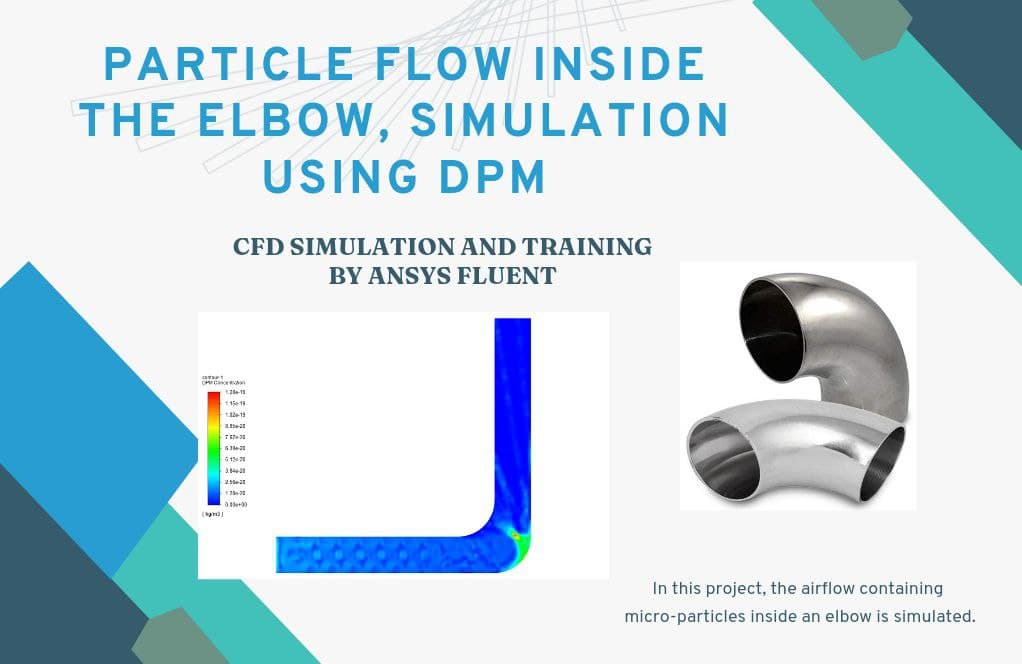
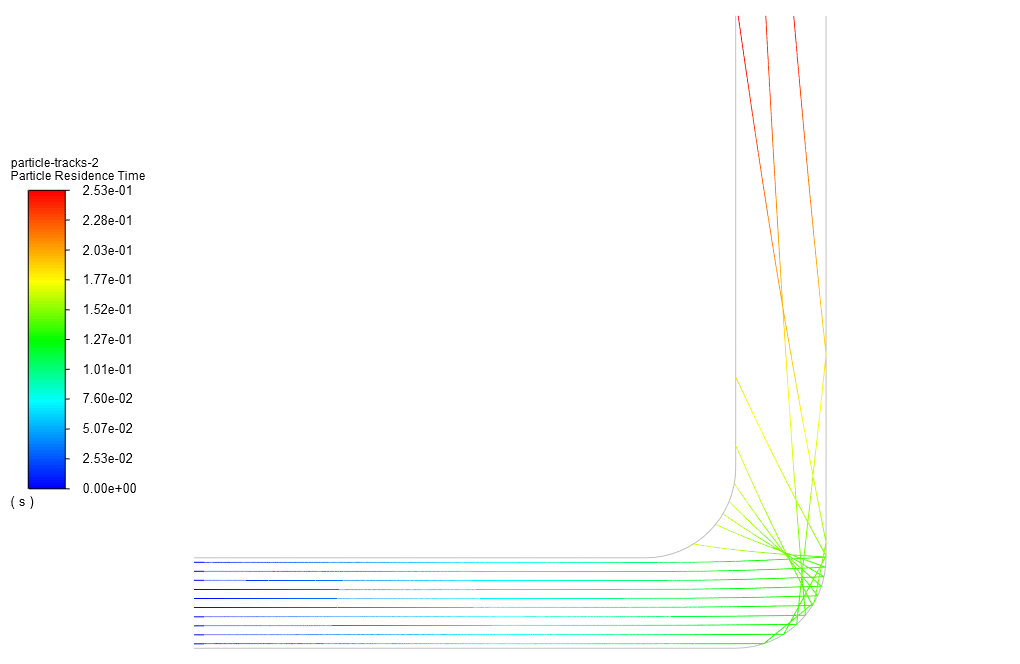
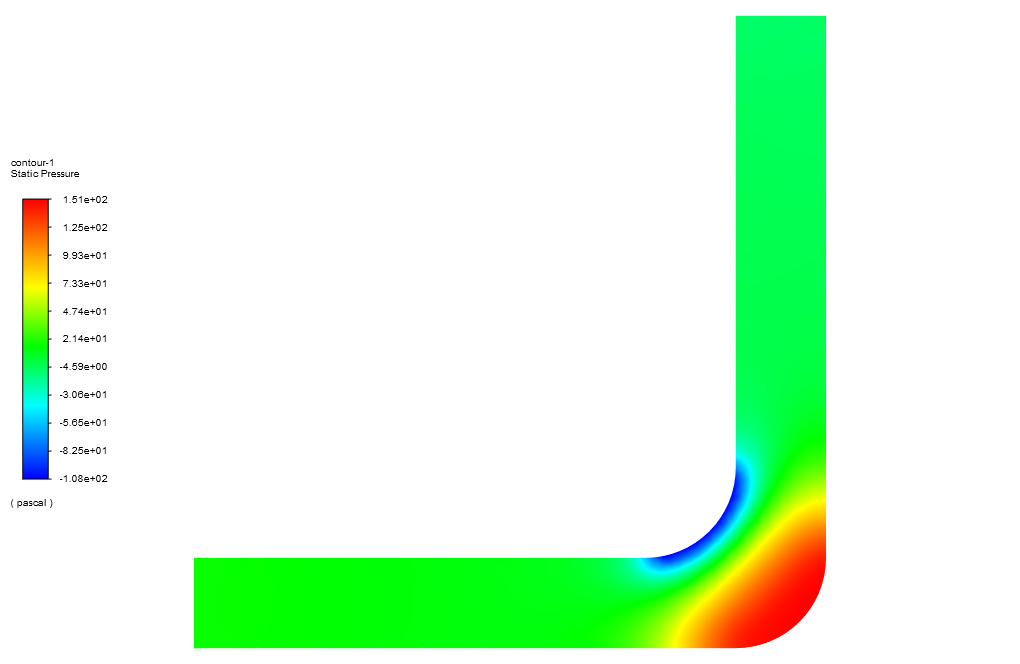
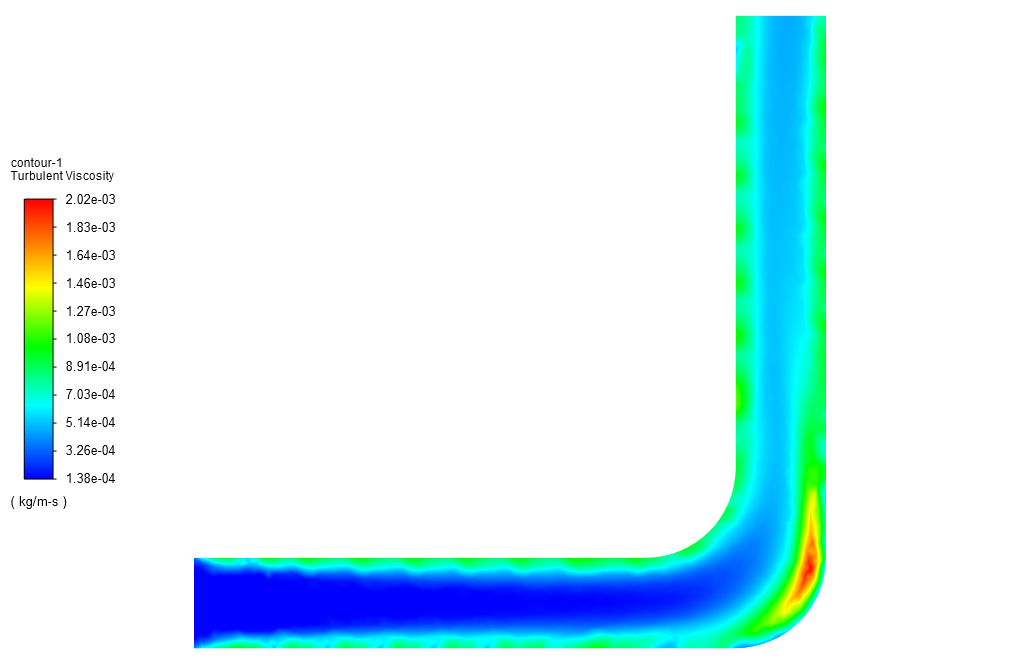
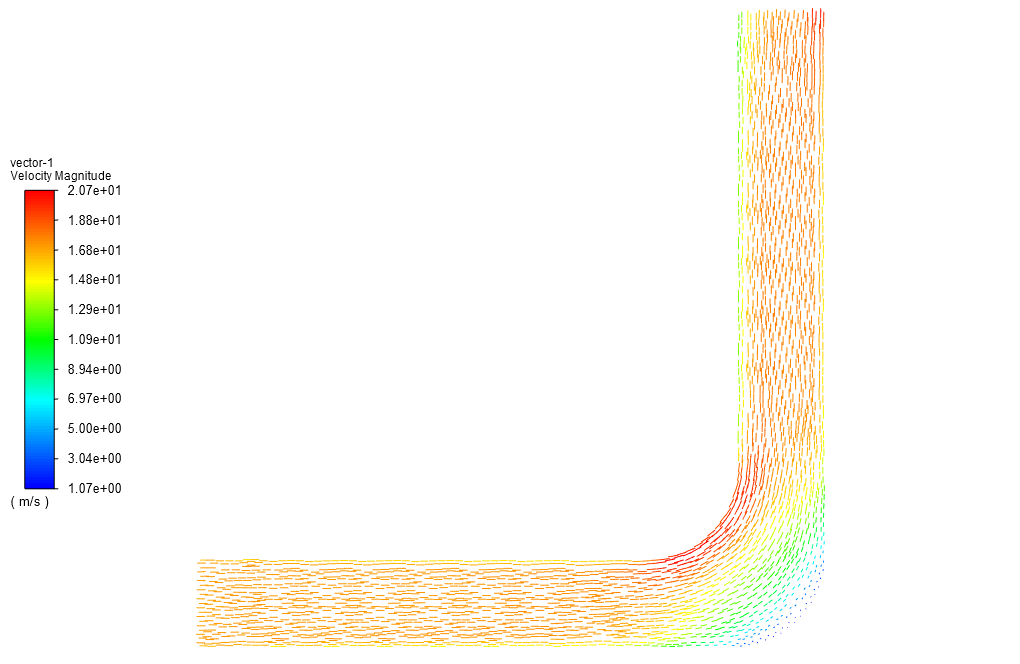
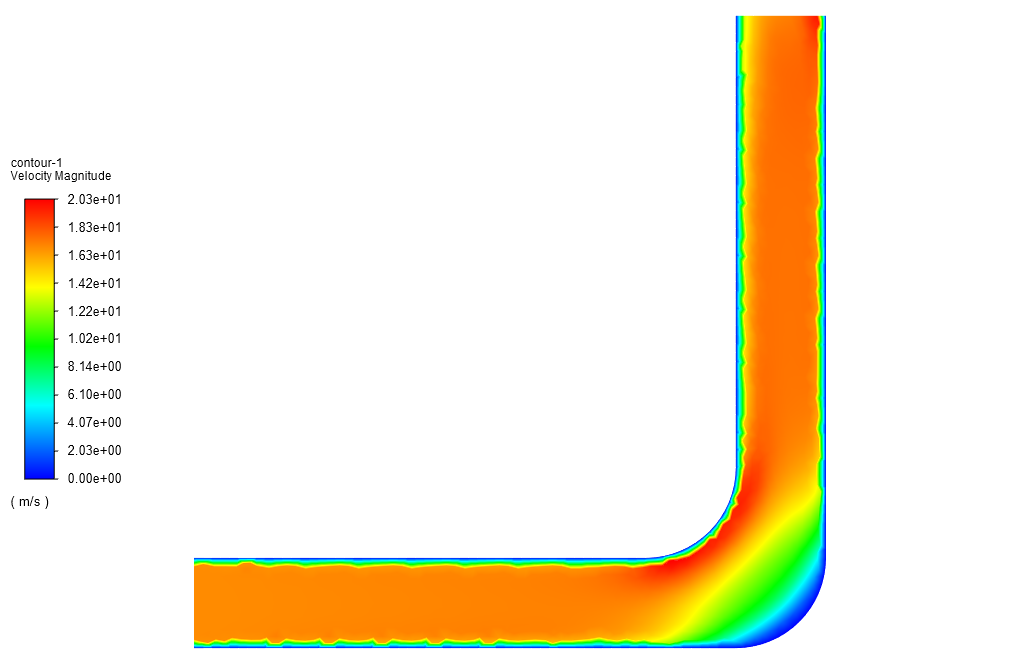
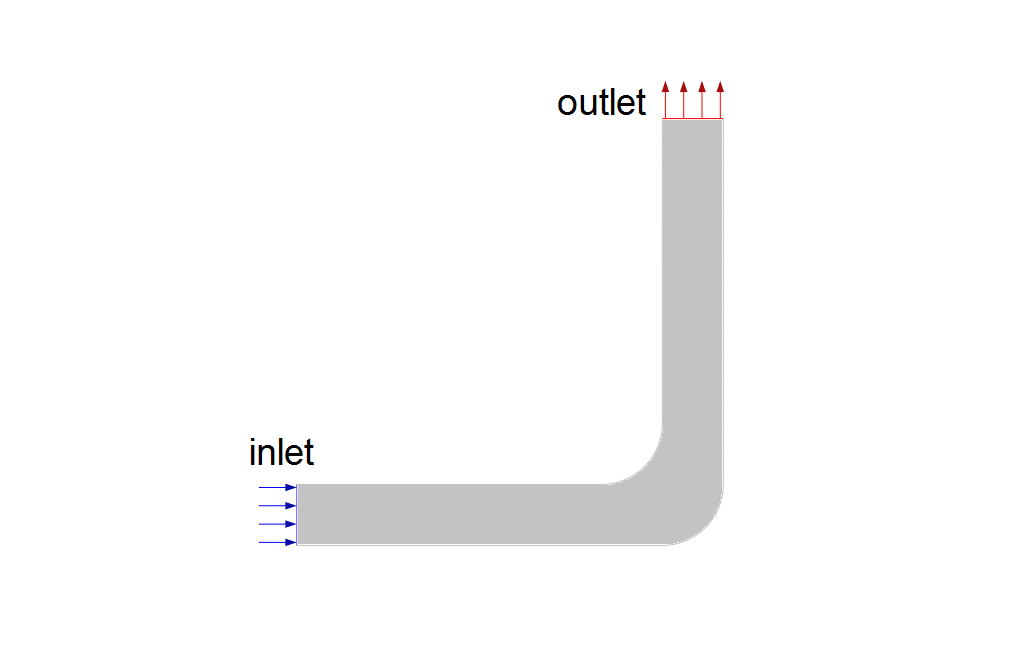
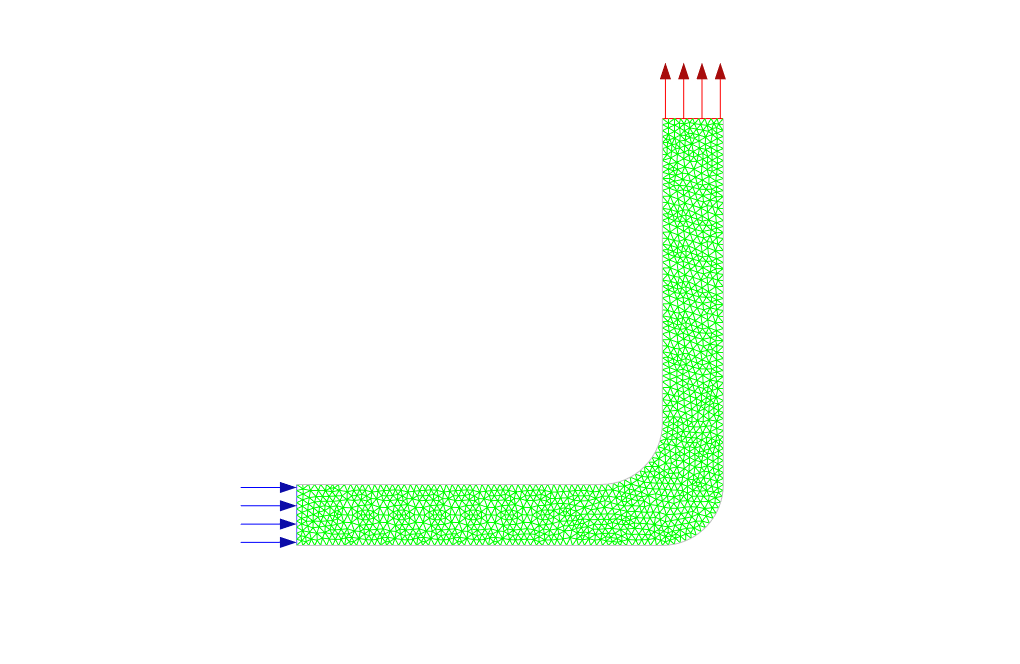
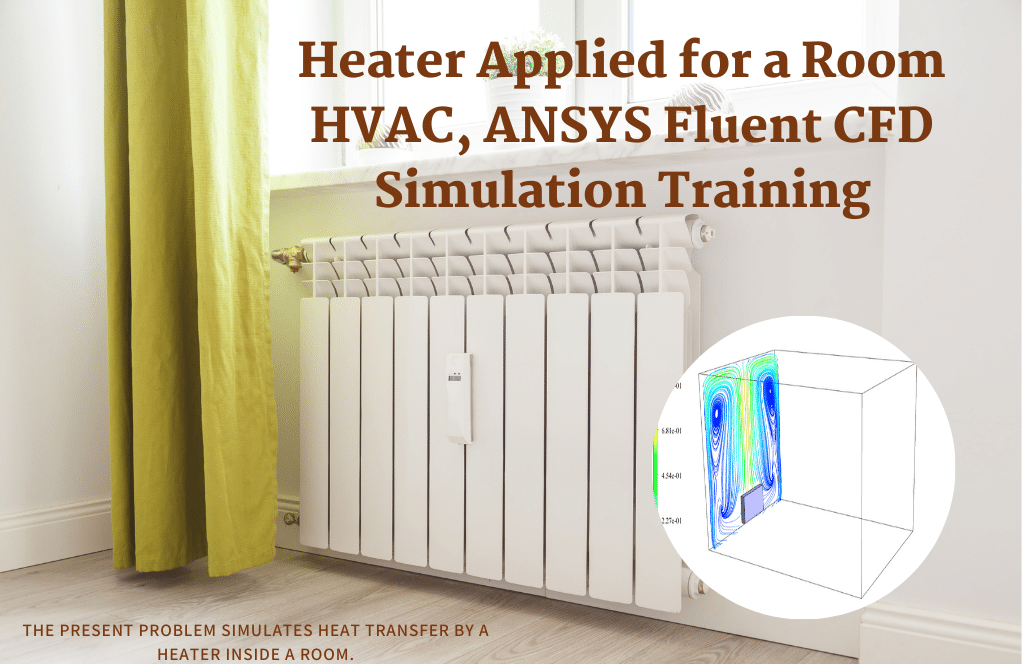
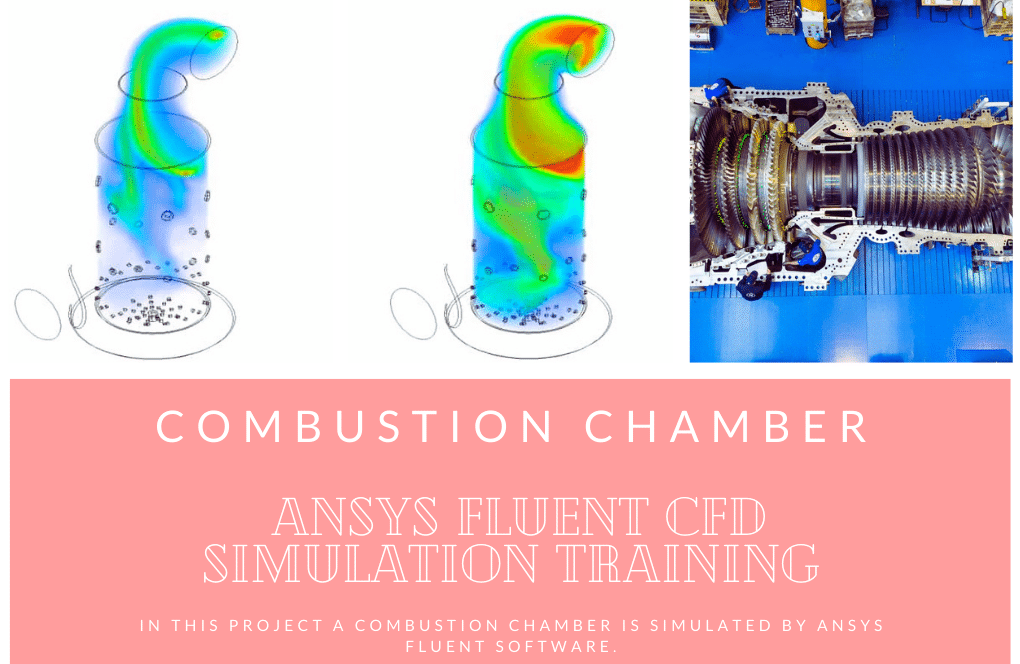
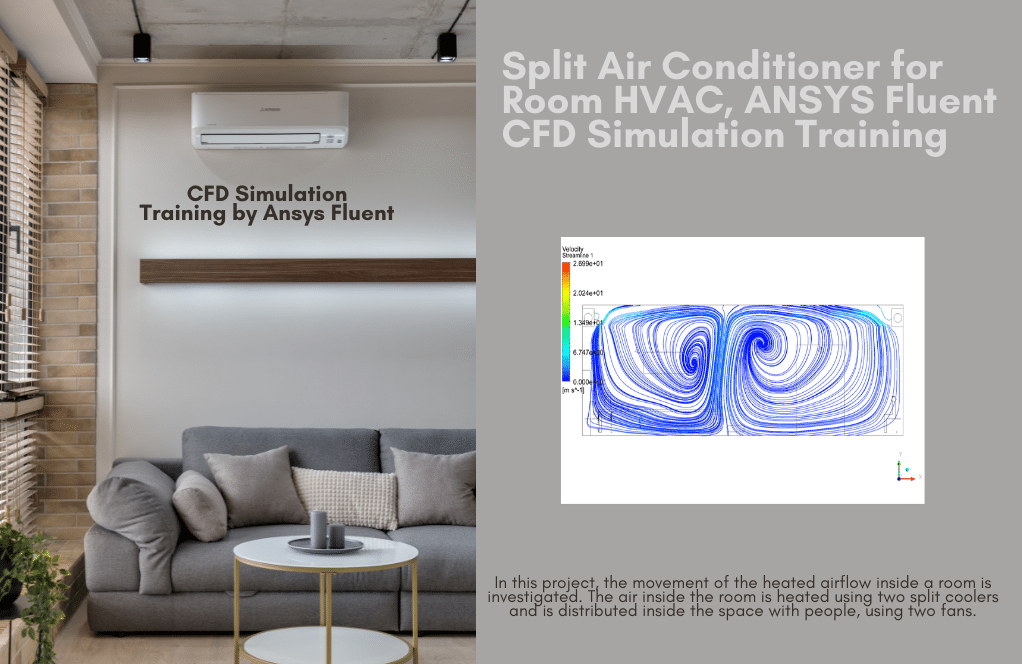
Carmen Krajcik –
Is the erosion in the elbow modeled dynamically to impact the fluid flow as the simulation progresses, or is it simply recorded as where the most erosion would occur over time without changing the flow?
MR CFD Support –
The erosion within the elbow is not modeled dynamically to impact the fluid flow during the simulation. It is rather recorded to determine regions where the most erosion would likely occur over time. The mechanical impact on the elbow structure and consequent change in fluid flow patterns are typically not part of the steady-state DPM analysis.
Leatha Kiehn –
The review presents a thorough layout, but could you elaborate on how erosion on the elbow surface was measured or predicted in ANSYS Fluent?
MR CFD Support –
In ANSYS Fluent, erosion is often predicted by tracking the particles’ trajectories and estimating the impact wear on the surface due to collisions. Parameters like particle mass flow rate, velocity, angle of impact, and material properties of both particle and surface are considered in an erosion rate calculation that’s usually based on empirical models. The reported erosion value can be derived using Fluent’s DPM erosion models, which can be enabled in the simulation setup.
Claire Leannon DVM –
The description mentions neglecting gravity’s effect; how does that influence the results related to particle deposition and erosion inside the elbow?
MR CFD Support –
When gravity is neglected in the simulation, the deposition and erosion patterns observed will be solely due to the momentum of the particles within the flowing air rather than any settling or vertical movements that gravity would cause. This assumption is often made when the primary focus is on understanding the impact dynamics and erosion due to the flow direction and pipe geometry, particularly when particles are small and likely to be carried along with the fluid stream.
Hazel Williamson –
I’m interested in the erosion aspect of this simulation. How accurately does the DPM method predict the erosion pattern in the elbow over time?
MR CFD Support –
The DPM (Discrete Phase Model) used in ANSYS Fluent is effective for predicting erosion patterns as it simulates the interaction between the particles and the elbow surface. Specifically, the model calculates the impact of particles, including their velocity and trajectory, on the surface. Over time, by monitoring the frequency and intensity of these collisions, ANSYS Fluent can estimate erosion rates and patterns. The accuracy depends on the quality of the mesh, the chosen boundary conditions, and the physical properties assigned to both the particles and the continuous phase. However, for a more detailed prediction of erosion, additional experimental validation might be necessary.
Ian Langworth –
I learned a lot from the particle flow in elbow erosion CFD simulation tutorial, but I’m curious about the erosion prediction. How is the erosion rate calculated or estimated in this simulation?
MR CFD Support –
The erosion rate in the simulation is estimated using a combination intrinsic to DPM and empirical models that calculate the impact wear caused by the particles upon collision with the elbow surfaces. Parameters affecting this rate include particle size, velocity, material, angle of impact, and the current status of the wall surface. Fluent provides specific models, like the Oka erosion model, to predict this phenomenon based on these factors.
Demarco O’Kon –
I’m curious, what type of particles does the DPM in this simulation handle, and are there any limitations on particle size or material properties?
MR CFD Support –
The DPM in this simulation can handle a wide range of particles, as long as they are discrete, separate phases from the primary fluid. However, certain conditions apply, such as particle size being much less than the flow’s characteristic length scale. For this model, there is no mention of specific limitations on particle size or material properties beyond a defined diameter of 0.003741 m for the particles. The simulation handles inert particles, which means the particles do not react chemically with the fluid and their material properties remain constant.
Jessie Olson –
Really impressed with the application of the DPM model here. It provided a clear visualization of flow trajectory and erosion patterns inside the elbow which can be extremely valuable for industrial applications!
MR CFD Support –
Thank you for your positive feedback! We are glad to hear that our training material was able to provide a clear and helpful visualization of the particle flow and erosion process. It’s our goal to create useful and practical CFD simulation content. If you have any further questions or need more training, please don’t hesitate to reach out.
Willie Klocko DVM –
I found the provided velocity and initialization parameters helpful in understanding input setup. Could you elaborate on how you address the rebound or accumulation of particles at the impact locations?
MR CFD Support –
In sections where particles impact the wall, we apply a ‘reflect’ boundary condition which allows for the simulation of particle rebound. Additionally, if particle accumulation or erosion effects need to be accounted for, a user-defined function (UDF) can be implemented to capture the erosion rate of the surface material over time due to these particle collisions.